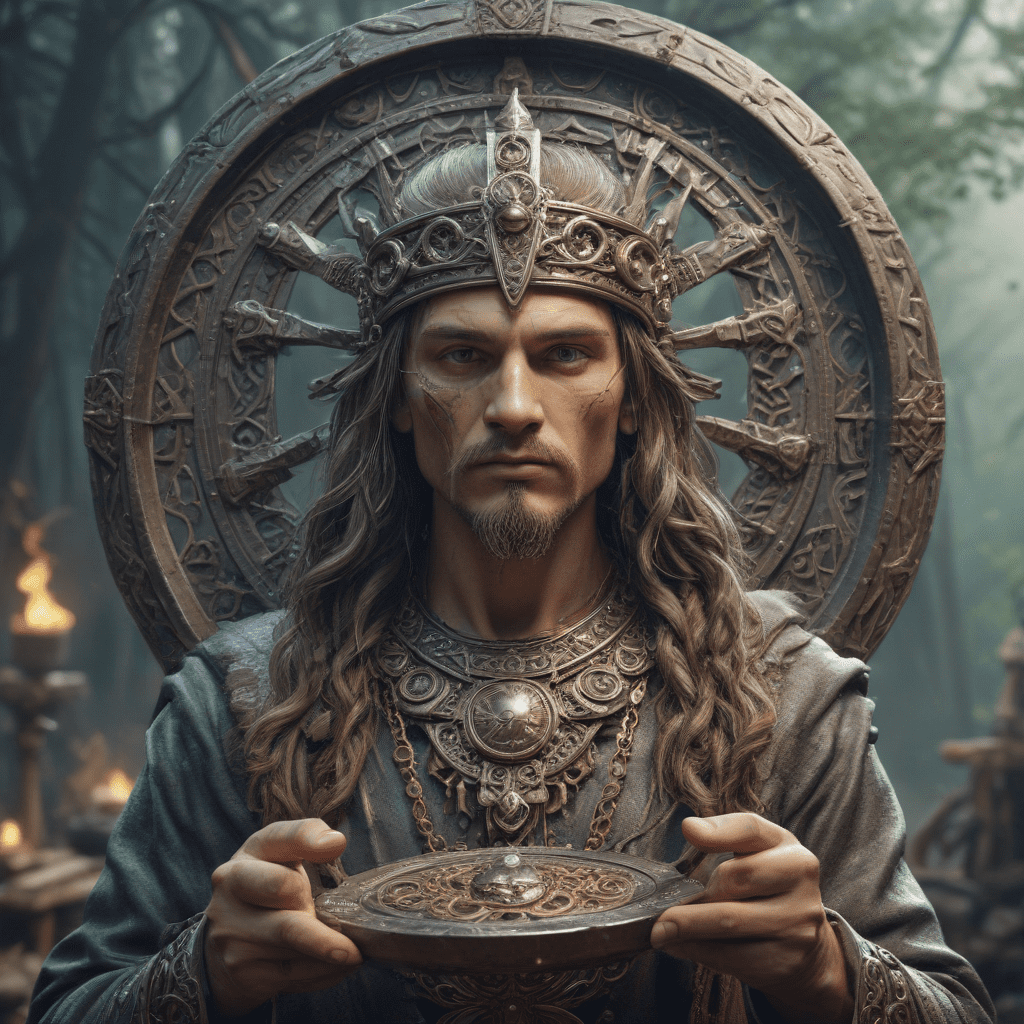I. Introduction: Slavic Mythology and Metalworking
Metalworking has played an integral role in Slavic mythology, with deities and folklore embodying the significance and artistry of this craft. The Slavs revered metalwork as an essential art, with skilled smiths holding esteemed positions within their communities.
II. Svarog, the God of Fire and Metalwork
Svarog stands as the central deity in Slavic mythology associated with metalworking and fire. He is known as the Heavenly Smith, the divine craftsman who created the Earth and the stars. His celestial forge symbolizes the transformative power of fire and metal, a testament to the importance of this art in Slavic culture.
III. Svarozhchichi: Sons and Helpers of Svarog
Svarog's divine family, the Svarozhchichi, consists of sons who assist him in his craft. Svarogich embodies fire and the smithing of metal weapons, Dazhdbog represents sunlight and metal tools for agriculture, while Perun wields the power of lightning and metal in warfare. These deities reflect the multifaceted nature of metalworking in Slavic society.
IV. Veles, God of the Underworld and the Forge
Veles, known as the King of the Underworld, also has a close association with metalworking and smithing. His realm beneath the earth holds the precious treasures and knowledge of metallurgy. Legends tell that Veles taught mortals the art of forging weapons, providing protection against the unseen forces of darkness.
V. Smithing Rituals and Beliefs
Metalworking in Slavic culture went beyond mere craftsmanship; it involved intricate rituals and beliefs. Smiths were held in high regard, believed to possess mystical abilities. Rituals accompanied the forging process, ensuring the strength and effectiveness of the finished items. These rites included incantations, offerings to deities, and the use of specific symbols in the design of weapons, tools, and other metal objects.
VI. Sacred Symbols in Metalwork
Slavic metalwork is adorned with a repertoire of sacred symbols that carry deep cultural significance. The sun, depicted as a wheel or circle, represents Svarog and life-giving forces. Stars symbolize Dazhdbog and celestial guidance. The thunderbird and other mythological creatures embody power and protection. These symbols not only enhance the aesthetic appeal of metalwork but also imbue it with spiritual meaning.
VII. Metal Weapons and Armor
Metal played a pivotal role in Slavic weaponry and armor. Swords, axes, spears, and shields were meticulously crafted with iron and steel, showcasing both skill and martial prowess. Each weapon was intricately designed, balancing function and aesthetics. Elaborate helmets, chainmail, and plate armor provided essential protection in battle, embodying the courage and strength of Slavic warriors.
VIII. Everyday Metal Tools and Vessels
Beyond warfare, metal was instrumental in everyday life. Smiths forged hoes, plowshares, and other agricultural tools, enabling efficient farming for sustenance. Pots, bowls, and cooking utensils made of iron and bronze facilitated meal preparation and preservation. Metal locks, keys, and household items provided both security and convenience. These versatile metalware objects enriched domestic life and reflected Slavic ingenuity.
IX. Symbolism of Iron in Slavic Culture
Iron held profound importance in Slavic culture. It represented strength, power, and invincibility. Iron amulets, particularly horse-shaped pendants, were worn for protection against evil spirits and to promote fertility. Iron objects buried with the deceased symbolized continuity and the transition to the afterlife. The enduring value of iron extended beyond the utilitarian realm, deeply embedded in Slavic beliefs and rituals.
X. Legacy and Influence of Slavic Metalworking
The legacy of Slavic metalworking has left an enduring mark on history and culture. Slavic metalworking techniques and designs influenced artisans far and wide, contributing to the development of metallurgy throughout Europe. Slavic craftsmen traveled widely, sharing their expertise and fostering cultural exchange. Today, Slavic metalwork continues to inspire contemporary artists and designers, preserving the rich traditions and aesthetic sensibilities of our ancestors.
FAQ
Q: Who was the supreme deity associated with metalworking in Slavic mythology?
A: Svarog, the Heavenly Smith, was the revered god of fire and metalwork.
Q: What is the significance of the sun symbol in Slavic metalwork?
A: The sun, often depicted as a wheel or circle, symbolizes Svarog and represents life-giving forces.
Q: How did metal tools and vessels contribute to everyday Slavic life?
A: Metal tools, such as hoes and plowshares, enabled efficient farming, while pots, bowls, and cooking utensils facilitated meal preparation and preservation, contributing to domestic well-being and convenience.
Q: What was the symbolic meaning of iron in Slavic culture?
A: Iron symbolized strength, power, and invincibility, and iron amulets were worn for protection and to promote fertility.
Q: How has Slavic metalworking influenced the present day?
A: Slavic metalworking techniques and designs have influenced artisans and designers in contemporary times, preserving the cultural heritage and aesthetic sensibilities of Slavic ancestors.
